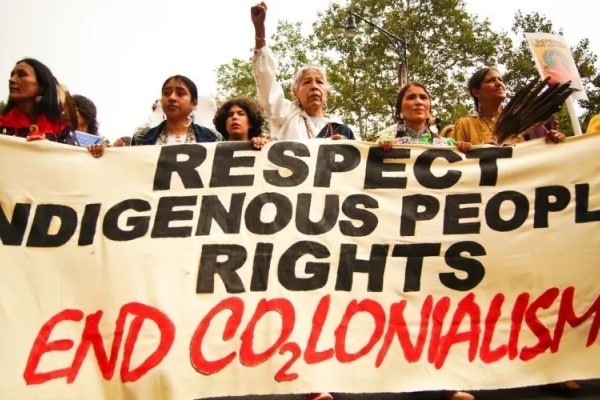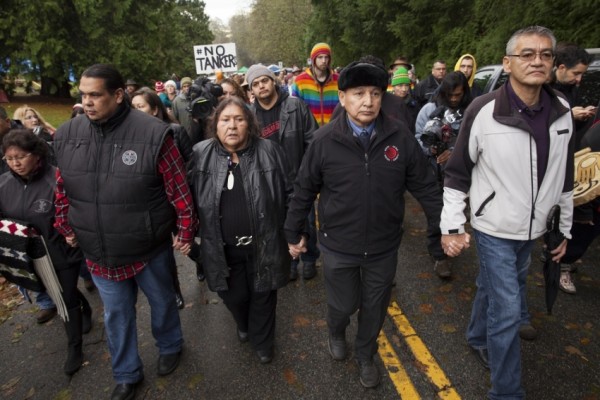Indigenous nations lead opposition to pipeline development

Photo by John Heminger
With the plans for an Enbridge pipeline linking the tar sands in Alberta to the West Coast temporarily blocked, activists are mobilizing against TransCanada’s proposed 4,600-kilometre Energy East pipeline. If built, the pipeline would be the largest in North America and would see 1.1. million barrels of tar sands oil shipped each day from Western Canada to New Brunswick.
The pipeline is disingenuously being promoted as a job creator and a way of reducing Canada’s dependency on imported oil, but make no mistake about it: Energy East is simply another “rip it and ship it” resource development scheme designed to make fast money for Big Oil by getting tar sands oil onto the international market.
Although many Canadians and Quebecers have voiced concerns about the environmental impacts of the proposed pipeline, Indigenous Nations are leading the opposition to Energy East. In New Brunswick, Grand Chief Ron Tremblay recently declared: “As members of the Wolastoq Grand Council we unanimously oppose the Energy East Pipeline project in order to protect our non-ceded homeland and waterways, our traditional and cultural connection to our lands, waterways, and air. The Wolastoq Grand Council has serious concerns for the safety and protection of the animals, fish, birds, insects, plants and tree life that sustains our Wolastoq Nation.” Other Indigenous Nations feel similarly. In January 2015, Anishinaabe Grand Chief Warren White stated, “I do not want to be the grand chief who consented to a pipeline that’s going to destroy 30 percent of the fresh water in Ontario, in Treaty 3 territory … We will be the ones to stop this. Our communities, our youth, our leadership are being called on by other nations.”
Haudenosaunee peoples are also taking a stand against Energy East. Grand Chief of the Kanesatake Mohawk community, Serge Simon, said that “The Mohawks of Kanesatake were inspired by the efforts of First Nations out West like the Yinka Dene Alliance who successfully built a wall of Indigenous opposition to halt the threat posed by the Enbridge Northern Gateway pipeline. We are now working to extend that wall of opposition out East to stop the TransCanada Energy East tar sands pipeline.”
On March 8, 2016, Grand Chief Simon sent an email to Québec Premier Philippe Couillard (which was posted on cbc.ca) in which he explained that the pipeline “threatens Kanesatake’s lands, waters and our people’s very survival as a result of setback the project represents in the fight against climate change,” of which Indigenous peoples are the first victims. He also pointed out that there are “few longterm jobs associated with the project, but many more associated with clean energy, healthy communities, energy conservation and efficiency.” Simon’s declaration won support from other Indigenous groups, including the Iroquois Council and the Assembly of First Nations Quebec and Labrador.
Canadian Dimension stands in solidarity with Indigenous peoples opposing Energy East and fighting for environmental justice. From the fight against fracking waged by the Elsipogtog First Nation in New Brunswick to the struggles of recently murdered activists Berta Cáceres and Nelson Garcia in Honduras, Indigenous peoples are championing the defence of their land and the protection of the entire planet from environmental destruction. But this burden should not fall on Indigenous peoples alone. It is a heavy responsibility that must be more equally shouldered by Canadians and Quebecers. Labour and activist groups from coast to coast should rally to support Indigenous land defenders. Because we share the Earth, we must also share in the struggles to defend it against the depredations of colonialism and capitalism.
This article appeared in the Spring 2016 issue of Canadian Dimension (Childhood).










